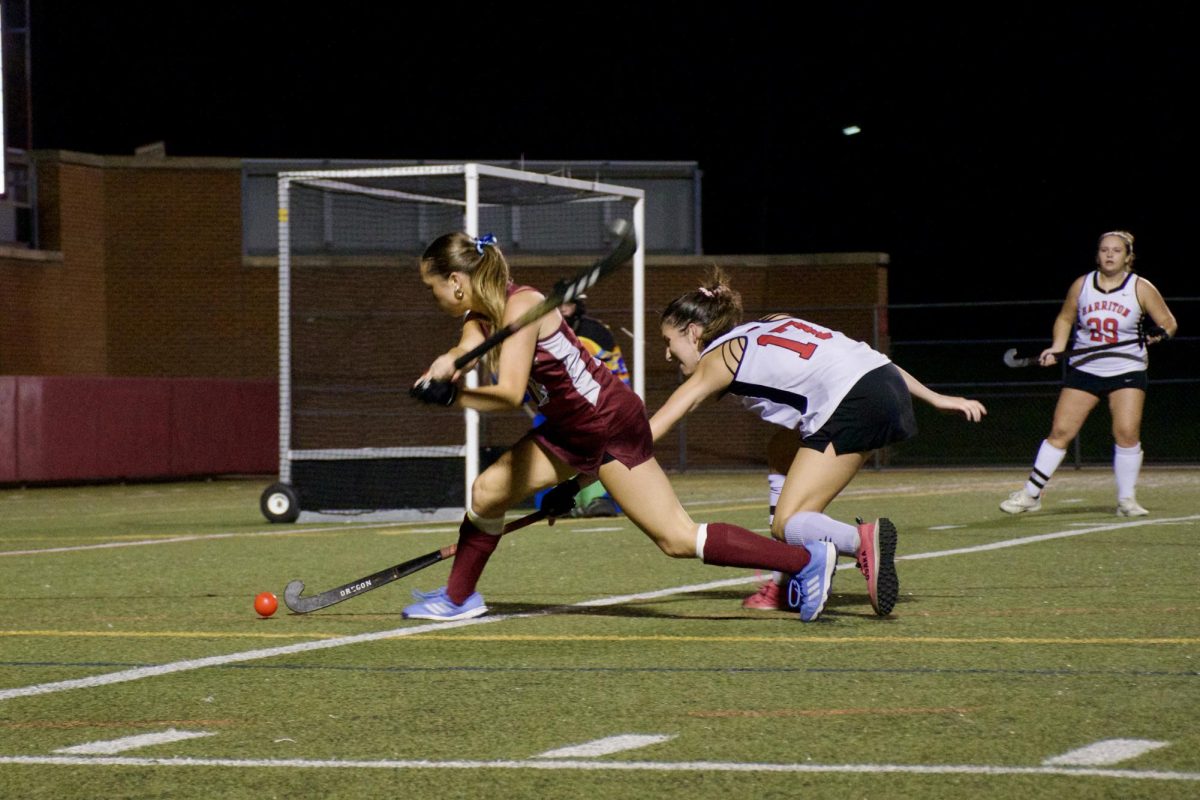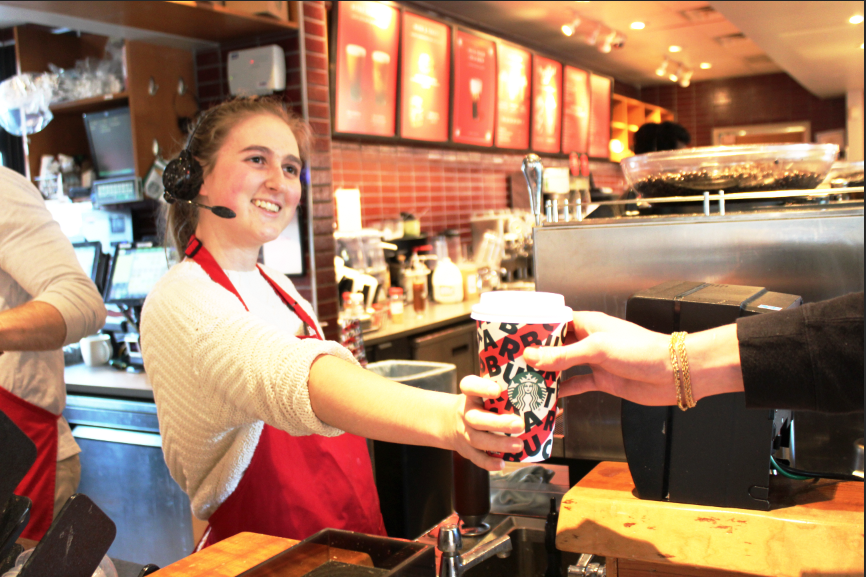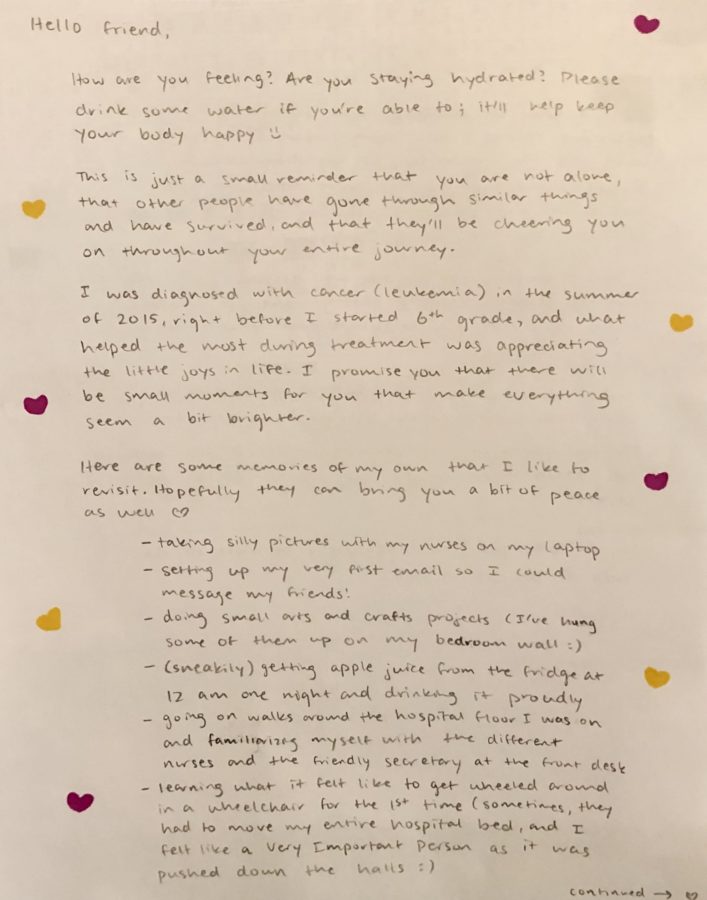The Spoke surveyed ten homerooms regarding their holiday shopping habits, separated by grade level and chosen randomly. In total, The Spoke collected 198 responses.
The day after Thanksgiving, sophomore Emily Burgess woke up at around 5 a.m. to shop with her friend Bridget Davidson and sister Leigh at the KOP mall.
“We got coffee and food and arrived at KOP at 5:50. We shopped until 8, but we were so tired. After going to more stores to buy clothes and presents for our families, we got picked up at 10 and I went right to bed,” Burgess said.
According to CNBC, this Black Friday marked the biggest sales day ever recorded and second largest day in sales for Cyber Monday, with Black Friday shoppers spending $7.4 billion just online. In fact, according to the Wall Street Journal, Black Friday drew more online sales than Cyber Monday this year, with overall sales coming up by 16% from last year over the 5-day period between Thanksgiving and Cyber Monday. At Conestoga, 44% of surveyed students shopped on Black Friday this year and 47% shopped on Cyber Monday.
The consumer focus in our society today has driven more and more businesses and stores to market holiday products earlier, even as early as before Thanksgiving.
According to KOP mall’s customer service center, KOP began putting up the holiday decorations well before Halloween, to ensure that all the decorations could be up in time for the holiday shopping season. The earlier appearances of holiday items and decorations in stores can be described by the term, “Christmas Creep,” which is a merchandising phenomenon first introduced in the mid-1980s.
Like Burgess, junior Yasmeen Tayea also decided to take a Black Friday shopping trip at the KOP mall on Nov. 29.
“Around 2 p.m., I stopped by the Apple store to look for a new phone, but it was so crowded and everyone seemed so busy,” Tayea said.
While Tayea experienced one end of the spectrum of congested malls on Black Friday, senior Amelia Thibault was on the other side of the register as she spent her Thanksgiving night, now commonly considered as the beginning of Black Friday, working at Starbucks.
“A lot of mornings at Starbucks are pretty chaotic but on Black Friday, it was a lot of families, so every order was more than one drink and people were more in a hurry so they weren’t as patient as they usually are,” Thibault said. “But it was a mixed bag on both ends of the spectrum, some people being really nice or people being a little rude.”
Congested malls and long lines are just a part of the consumer culture that has worked its way into the holiday season in recent years. The gift-giving tradition has reached new heights.
Generally, the tradition of giving and receiving gifts is one that is fondly revisited year after year and serves as a way for people to show their appreciation of others.
“I think gifts are a perfect way to show your appreciation, especially if they’re handmade, then you get to see people put time and effort into it,” freshman Anish Garimidi said. “Or even if it’s bought, people put time and effort to know what you like and get you the perfect gift.”
Despite the personal meaning a handmade gift may convey, only 16% of students surveyed reported that they preferred receiving handmade gifts while 84% preferred purchased gifts. In addition, 22% of students hand make gifts while 78% of students chose to purchase gifts for friends or family members.
For gifts to teachers from students, Secret Santas and gift exchanges within friend groups, the holiday shopping list seems to grow longer by the minute, taking a greater toll on people’s bank accounts each year. This often results in the rush in most shopping centers during the holiday season.
“I feel like people do spend a lot more during the holidays. Because you’re looking for gifts and the deals even though they’re there, they bring people in, but you’re still spending a lot of money on the things that you’re buying,” junior Jessica Reintjes said.
However, junior David Wang said that he values the thought behind gifts over the price tag.
“A lot of people believe that giving more expensive gifts shows that they care more than if they got something that is a bit cheaper,” Wang said. I personally feel like it’s more of the gift itself, not the price behind it. For example, my sister gave me a handmade card one year with a bunch of our memories written on it. It is something that showed the value of handmade gifts without the gift being expensive or necessarily materially useful.”
Holiday rush
Marshal Cohen, the chief industry adviser of NPD Group, a market research firm, explained that Black Friday has been starting earlier and earlier.
“In some cases, (Black Friday) sales started in October. Lowe’s and Home Depot even had Spring Black Friday sales,” Cohen said.
As such, many students have found the shift away from Thanksgiving and towards consumerism disillusioning.
“To me, Black Fridays make Thanksgiving more disingenuous. The whole point of the holiday is to spend time with family but if you are rushing off to Walmart at 6 p.m. for a $100 TV, it makes you feel sad about consumerism,” Garimidi said.
Garimidi has also observed the increased speed in the turnaround of new items on the market from holiday to holiday especially within the Thanksgiving to Christmas time frame.
Wang believes Black Friday shopping shows America’s ambivalent nature.
“I think it is ironic how Black Friday, which is the biggest consumerism event of the year is right after Thanksgiving, when we give thanks for what we already have and acknowledge that what we currently have is enough to live off of,” Wang said. “Black Friday shopping juxtaposed to Thanksgiving shows the big contrast between the two sides of America: how America wants people to believe in unity and how Americans’ individual desires to be the best.”
The holiday-driven sales, occurring earlier each year, and malls crowded with eager deal-seeking shoppers are in part due to the consumer culture of today’s American society.
Stores and businesses have also adapted to serve shoppers during the holidays. Michael Shine, who runs the Nothing Bundt Cakes franchise in the Gateway Shopping Center, explained that Nothing Bundt Cakes changes decorations and cake packaging in order to fit the holiday seasons.
According to Wang, who took AP Economics last year, consumer culture has also contributed to America’s waste culture.
“Because people are able to purchase things so easily, they are inclined to get rid of things that much easier. People know that they can always buy a new version so it leads to a cycle of continually leading to more waste in landfills, and more and more money being spent on worthless goods,” Wang said.
Despite the consumerism and holiday shopping rush that occurs to prepare for the holiday season, many families preserve the true meaning of the holidays through their own traditions.
Senior Nicolaas Weggelaar’s extended family gathers in Germany or America every year for Christmas.
“There’s so many gifts sometimes,” Weggelaar said. To finish opening all the gifts from all the relatives, he and his family have a special tradition. Round by round, turn by turn, everyone in the family rolls a die. Get a six, open one of your many gifts. Otherwise, wait for the next round.
Weggelaar enjoys seeing relatives open his gifts, especially when he gets them what they didn’t even know they wanted. Still, the bounty of gifts takes second place next to his favorite part of the holiday season: seeing family.
“I really love and enjoy it,” Weggelaar said. “It’s fun, getting to roll to open, but especially… it’s not just about the gifts, it’s about everyone coming over. Mostly appreciating that they could come and (we could) spend time together.”


























































































